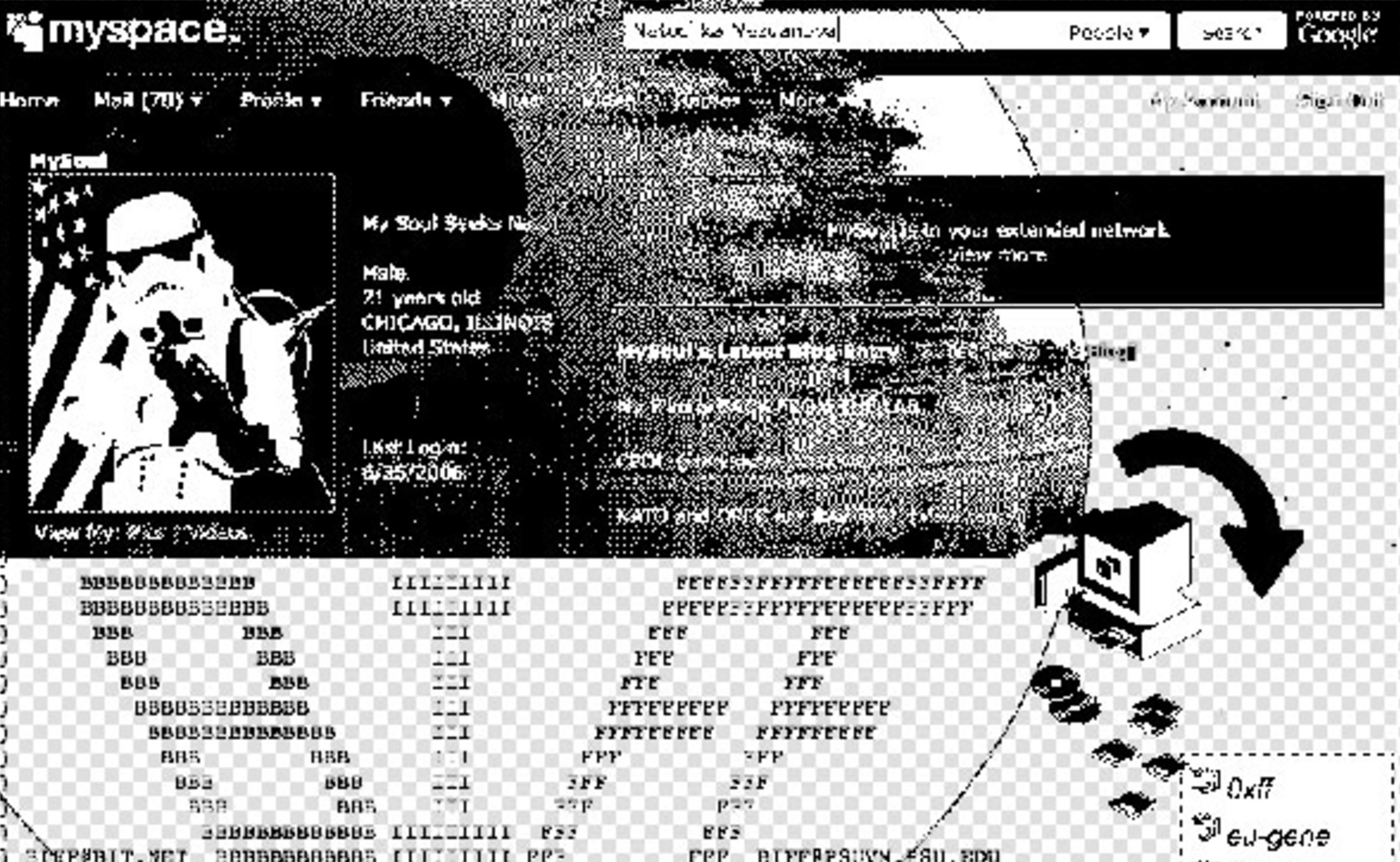The beginning of the video was rather calm and understandable, as Jon Cates talks about what he wishes to achieve through his desktop mise-en-scene.
“I want to reflect on real-time. I want to reflect on real-time renderings across international time zones, in fragments, errors and overlaps. I want to play with recursivities. These feedback loops merge personal data and swim in associative form, from Chicago to Taipei to Boulder and back again.”
Jon Cates
He experiments with fragmented visuals of his desktop, switched between several tabs and programmes, and produced audio feedback. Past the 4:30 mark, however, the white noise and visual glitches get increasingly intense. On the first watch, it felt random and chaotic, and I didn’t fully understand its artistic qualities.
After reading Randall Packer’s interview with Jon Cates, I could better appreciate the glitch art that was presented in the video. I found Jon Cates’ take on glitches very refreshing and unique, as compared to the conventional perspectives. We often get annoyed when encountering lags and errors (faulty screens, poor internet connection, choppy displays, etc), and have never seen glitch in a positive light. We take all advancements in technology for granted as we send emails, stream videos and browse the net everyday. Jon Cates, however, is the exact opposite. He brings attention to all the complication that goes on behind our technology and breaks them apart.
 Screen grab from BOLD3RRR – Audio remixing by Jon Cates
Screen grab from BOLD3RRR – Audio remixing by Jon Cates
While a giant mix of everyday desktop activities is what makes up BOLD3RRR, it is certainly not the main point. The difference between this and conventional desktop streaming (games, vlogs, etc) is that it is a real-time performance art that seeks imperfection, the push and pull between human and machine language. It pulls us away from our endless pursuit of perfect technology, and instead questions us on the processes that goes behind glitches.
What kind of mixing and rendering technology did Cates use? How did he transit seamlessly from one glitch to other while streaming live? To me, it appears Cates produced imperfection, perfectly.

Screen grab from BOLD3RRR – Streetview and overlaying text
It was interesting that Jon Cates’ responses in the interview was also full of glitches, even in textual form. ‘d1Ɍ+y̶ ̶N̶3WWW_M3DI∆’ had strange symbols, along with errors like ‘faxxx’, ‘exxxperience’ and ‘&&’. While I personally found it quite difficult to read, it did connote the sense of playfulness and informality that glitches encompass.
“they are not sterile, they’re imperfect, they are not clean, b/c they exist in the world, which is also imperfect.
+ so, i do believe that d1Ɍ+y̶ ̶N̶3WWW_M3DI∆ as a way of lyfe + as an approach to artmaking is a way of foregrounding these faxxx, these realities, of our lived exxxperiences, + acknowledging how situated we all are w/ all of these systems, + artifacts that we have made, unmade && remade together.”Jon Cates
Wherever there is technology, there is glitch. Glitch shows that nothing is of perfection, no matter how much we seek it. It is all around us and perhaps we should learn to appreciate it at times, just like how Jon Cates take advantage of these opportunities to make art.



Excellent! This was a particularly interesting comment:
Yes, Cates reveals the things we normally do not allow. All the errors and mistakes we try and hide. But he says: why hide them? Perhaps they are beautiful, interesting, even arresting, which I think they are in his work. He has uncovered, essentially, a world that would ordinarily go unnoticed, a world that lies beneath the surface. Very good research with lots of specifics.
Could you please, though, separate your Facebook Live commentary into a separate post. Thanks!!
I like how you wrapped up your essay by stating how we are unable to run away from glitches because they are everywhere, everything is imperfect. One way to deal with this problem is by embracing them.
When we are unable to improve it, exploit it. It is ironic but the more you destroy it, the more beautiful it gets.